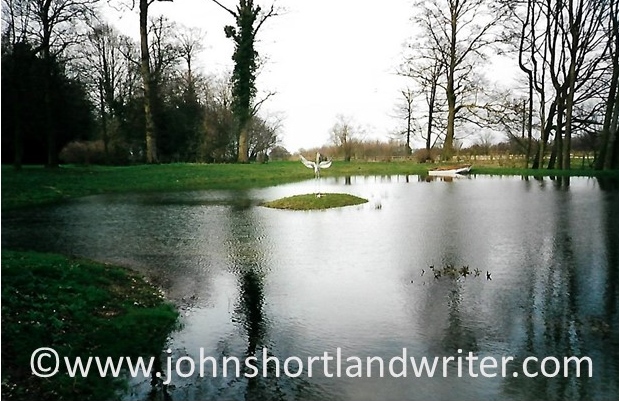We Built a Pond - you can too!
Winter is an ideal time to create a pond and with it fast approaching now is the time to start planning. Quite probably you have an idea where you want to place it but do think about its position carefully. Falling leaves from trees is an obvious issue but some others aren’t until it is too late. Water always collects at the given lowest point; a pond perched on top of a mound will look ridiculous so check where the lowest point in your garden is and create the pond there, remodelling other sections of the garden, if need be, to tie in.

With our proposed pond site, we already had a large depression where garden rubbish and junk had been thrown for years. Now overgrown with scrub, it needed careful clearing, including roots that may have punctured the lining. If space is tight, the pond should have a planting shelf set several inches below water level, around at least one third of its edge; if space permits a graduated slope to the pond encourages plants to spread more naturally and, to my mind, is preferable.

If access allows, it is sensible to hire a digger to create the pond for even a small one involves a lot of digging and moving of soil. In the past, the mound was often left behind with a few rocks, or even worse, bits of broken concrete, to create a rockery. This very rarely works well and it looks far better to have lawn leading down to the pond with possibly shrubs or other plants surrounding it. Whatever the choice, it is important to have a seamless transition from water to garden. Iris work well for this as there are varieties that will grow in shallow water and on the moist soil surrounding it; some reeds, too, will colonise the bank giving the pond that natural look.

When using a lining it is important to allow a decent overhang onto dry land. In this photo, the lining has been cut a little on the tight side – the weight of the water pulled the liner down into position; it is better to trim the liner after the pond has filled. Once that has been done the liner can be disguised by laying turf down the sides to just below water level. Once grown, it creates a beautifully natural appearance to the pool.


In the spring, aquatic plants can be planted. Oxygenating plants grow below water level and apart from being essential, make good cover for fish and insects from predators. Marginal plants grow in shallow water and are used for lining the edges of the pool. A thick planting of these are a good safety measure if small children are likely to visit, although they should never be allowed to do so unsupervised. Water lilies grow in different depths of water so do make sure that the variety you choose is suitable for the depth of the pond.

Ponds, however large, never need to be exceptionally deep, rarely more than a metre and can be as little as 50cms. Smaller ponds benefit from a deeper ‘hole’ so that fish can take shelter from the coldest weather. It is worth remembering that the larger the pond the easier it is to maintain and keep healthy. Finally, once the plants have established, fish can be added. For a wildlife pond, ornamental goldfish should be avoided although some of our smaller native fish can be included.

Koi Carp are best kept by enthusiasts!
It is always a surprise at how quickly new plantings grow in a garden and the pond is no exception. The scars of our pond had healed within months and even after just a couple of years ponds can look as if they have been there for ever. Now twenty years later, visitors to our garden find it hard to believe that the pond isn’t natural; it abounds with wildlife and there isn’t an inch of black butyl liner to be seen.

The pond featured here was built in the large garden of the house that I claim to be my birthright (joke). Correspondingly, the pond also had to be large but the principles of pond design and placement are the same whatever their size.
To read about the bizarre coincidences that cause me to ‘claim’ the house click on these links:
The House My Parents Built – 200 Years Ago
Reincarnation – or just Coincidence?


Lovely, thanks for sharing the process with us, building a pond isn't an easy feat for sure but it is definitely worth the investment, it is such a lovely feature in a garden and in the summer it attracts so much wildlife. Particularly if you own or rent a vacation home like we do it is a great addition for guests, and it is beautiful in all seasons. http://www.dryhill.co.uk/
ReplyDeleteSuch a great post and your photos are gorgeous! It looks like such an idyllic place. Thank you so much for sharing, and warm greetings from Montreal, Canada. My grandparents on my father's side were born in Kent. :)
ReplyDeleteHi Linda! Thank you so much for your kind words and greetings from one of my favourite cities. I have cousins living in Montreal, it is a great place.
DeleteSorry this response has taken so long but your comment had been sent to my spam box and I've only just discovered it. At least that gives me the opportunity to wish you a very happy 2017.